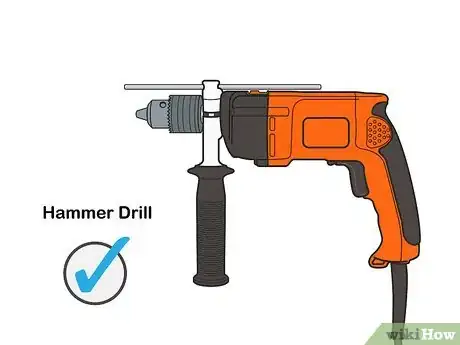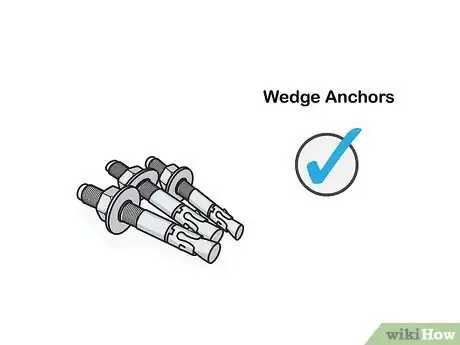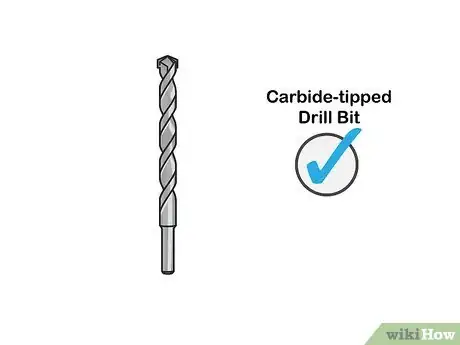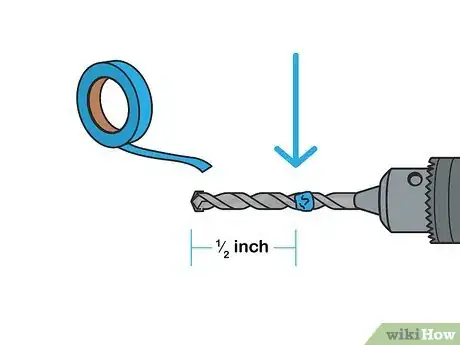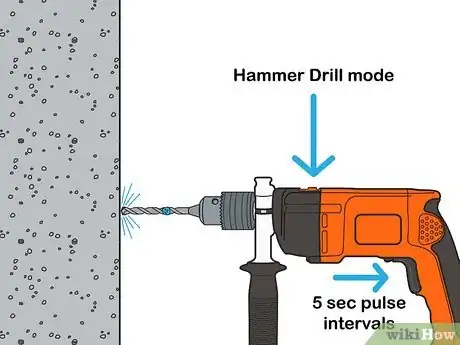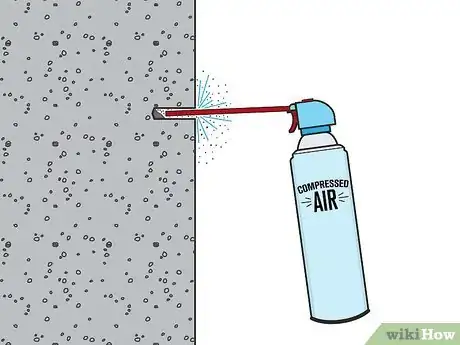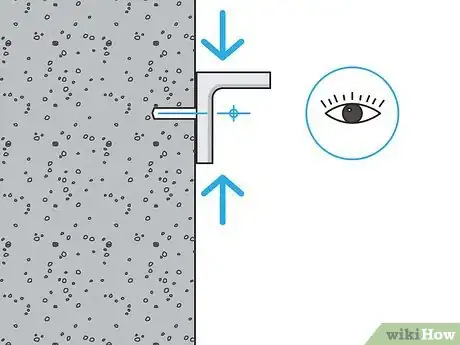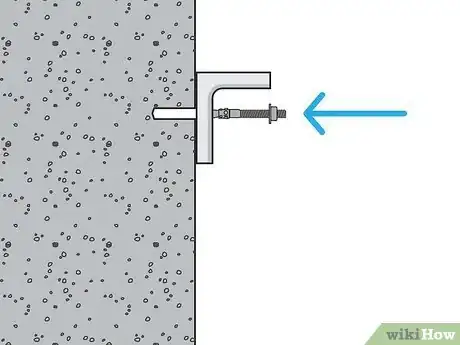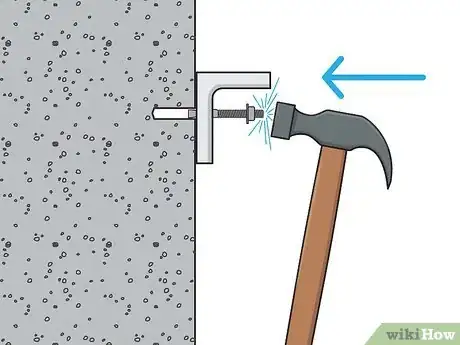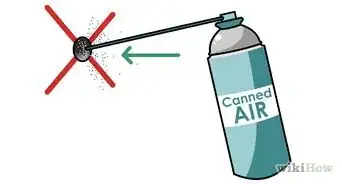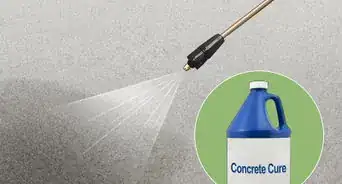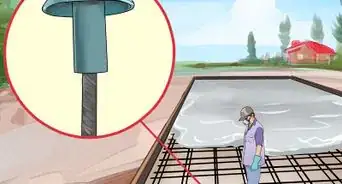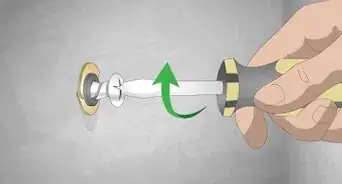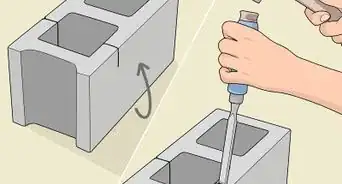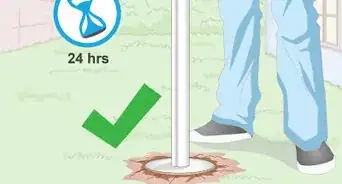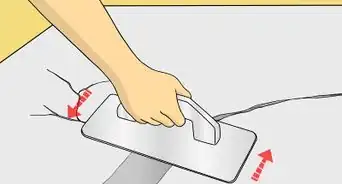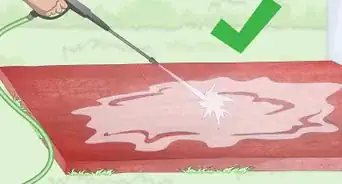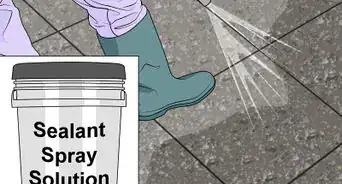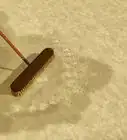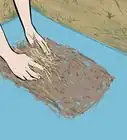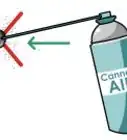This article was co-authored by Gerber Ortiz-Vega. Gerber Ortiz-Vega is a Masonry Specialist and the Founder of GO Masonry LLC, a masonry company based in Northern Virginia. Gerber specializes in providing brick and stone laying services, concrete installations, and masonry repairs. Gerber has over four years of experience running GO Masonry and over ten years of general masonry work experience. He earned a BA in Marketing from the University of Mary Washington in 2017.
There are 10 references cited in this article, which can be found at the bottom of the page.
wikiHow marks an article as reader-approved once it receives enough positive feedback. In this case, 93% of readers who voted found the article helpful, earning it our reader-approved status.
This article has been viewed 145,433 times.
If you want to make home improvements, there's a good chance that you'll eventually have to attach something to concrete. While this can seem daunting at first, there are ways that you can do it yourself without having to hire a contractor or handyman. Bolting into concrete requires the correct drill, anchors, and drill bit. If you follow the proper techniques and use the right tools, you can bolt almost anything to concrete.
Steps
Purchasing the Right Equipment
-
1Get a hammer drill. Buy or rent a hammer drill at a hardware store or online. A hammer drill is specially designed to drill into harder surfaces like stone and concrete. Hammer drills have a rotating and pounding motion, which makes it easier to drill into masonry work like concrete.[1]
- Attempting to penetrate concrete with a regular drill may damage it, unless you go very slowly and use a carbide-tipped masonry bit on a soft stone, like limestone.
-
2Purchase wedge anchors. You can buy wedge anchors online or at a hardware store. Other anchors can work with concrete and brick but wedge anchors are a good all-around anchor that you can use on light or heavy materials. Purchase anchors that penetrate into the concrete at least one inch (2.54 cm).[2]
- Look on the box to find the diameter of your wedge anchors so that you can get a drill bit that's the same size.
- Other anchors include sleeve anchors, strike anchors, hammer drive anchors, drop-in anchors, and machine screw anchors.[3]
Advertisement -
3Buy a titanium or carbide-tipped masonry drill bit. A titanium or carbide-tipped drill bit will penetrate through the hard concrete. You can purchase a carbide-tipped drill bit online or at a hardware store. Choose a bit that is a slightly smaller diameter than the anchors that you plan on using.[4]
Drilling into the Concrete
-
1Wrap a piece of tape .5 inches (1.27 cm) from the tip of the drill bit. Use a tape measure or ruler to measure from the tip of the drill bit. Wrap a piece of tape around the bit at this measurement. This will help you know how deep you are drilling.
-
2
-
3Drill into the concrete. Put your drill into hammer mode by flipping the switch on the side of the tool. Hold the hammer drill perpendicular to the concrete and press the bit against the concrete. Once it's in the correct position, pull the trigger while applying pressure on the back of the drill. Pulse your finger on the trigger at 5-second intervals until you've drilled up to the tape that you wrapped around the bit.[7]
- Read the instructions if you can't figure out how to put your hammer drill into hammer mode.
-
4Clean the dust out of the hole. Use a compressed air can or a vacuum cleaner to work out debris and dust in the hole. Fasteners will grip better to clean holes, and there will be a lot of concrete dust after you've drilled the hole.[8]
- You can also move a wire brush in and out of the hole to remove any leftover debris.
- Use a shop-vac when lifting concrete dust, not a household vacuum cleaner.
Attaching a Fixture with Wedge Anchors
-
1Place the fixture over the concrete and line up the holes. Line up your fixture or whatever you want to attach to the concrete. Line up the hole that you drilled into the concrete with the hole in the fixture. The hole in your fixture must be the same diameter of the anchor that you're bolting into the concrete.[9]
-
2Slide a washer and nut over the threaded end of the anchor. The nut and washer will help protect the anchor and prevent it from getting stripped by being hammered in. Put the nut first, then the washer so that the nut is over the washer but under the pin on the tip of the anchor.[10]
- Apply Loctite to the bolt to keep it from moving.
- Alternatively, you could use a locking washer.
-
3Hammer the anchor into the hole in the concrete. Drop the anchor into the hole in your fixture and hammer the pin on the top of the anchor to drive it into the concrete hole you drilled earlier. It should be a fairly tight fit. Continue to hammer the anchor down until the nut and washer are tight against the fixture.[11]
-
4Tighten the nut with a ratchet. Turn the nut clockwise with your hands to tighten it, then use a ratchet to tighten it until it's firmly attached to your fixture. As you tighten the nut, the anchor should grip to the concrete, holding your fixture in place.[12]
Things You'll Need
- Hammer drill
- Carbide-tipped or titanium drill bit
- Wedge anchors
- Painter's tape
- Safety glasses
- Earplugs
- Compressed canned air or vacuum cleaner
- Hammer
- Washer and nut (or locking washer)
- Loctite
- Ratchet
References
- ↑ https://www.familyhandyman.com/tools/drills/drilling-into-concrete-tools-rotary-hammers-and-hammer-drills/view-all
- ↑ https://www.familyhandyman.com/masonry/concrete-repair/drilling-concrete-and-installing-fasteners/view-all
- ↑ https://www.confast.com/articles/how-to-anchor-to-concrete.aspx
- ↑ https://www.confast.com/articles/sds-carbide-tipped-drill-bit.aspx
- ↑ Gerber Ortiz-Vega. Masonry Specialist & Founder, GO Masonry LLC. Expert Interview. 10 March 2020.
- ↑ https://www.concretenetwork.com/concrete/power_tools/safety.htm
- ↑ https://www.youtube.com/watch?v=djotP-sR4mU&feature=youtu.be&t=1m21s
- ↑ https://www.confast.com/articles/equipment-used-with-concrete-fasteners.aspx
- ↑ https://www.confast.com/articles/how-to-install-concrete-fasteners.aspx
About This Article
To bolt into concrete, you’ll need a hammer drill, a titanium or carbide-tipped drill bit, and wedge anchors. The first thing to do is put your drill into hammer mode and drill a hole in the concrete. Clean any concrete dust out of each hole you drill with a vacuum cleaner or wire brush. Once you’ve drilled the holes you need, line up your fixture with the holes. Place the anchor’s pin into the hole and hammer it into place. Finally, tighten the nut on your anchor with a ratchet to fix it firmly in place. For tips on how to select alternatives to a wedge anchor, read on!
